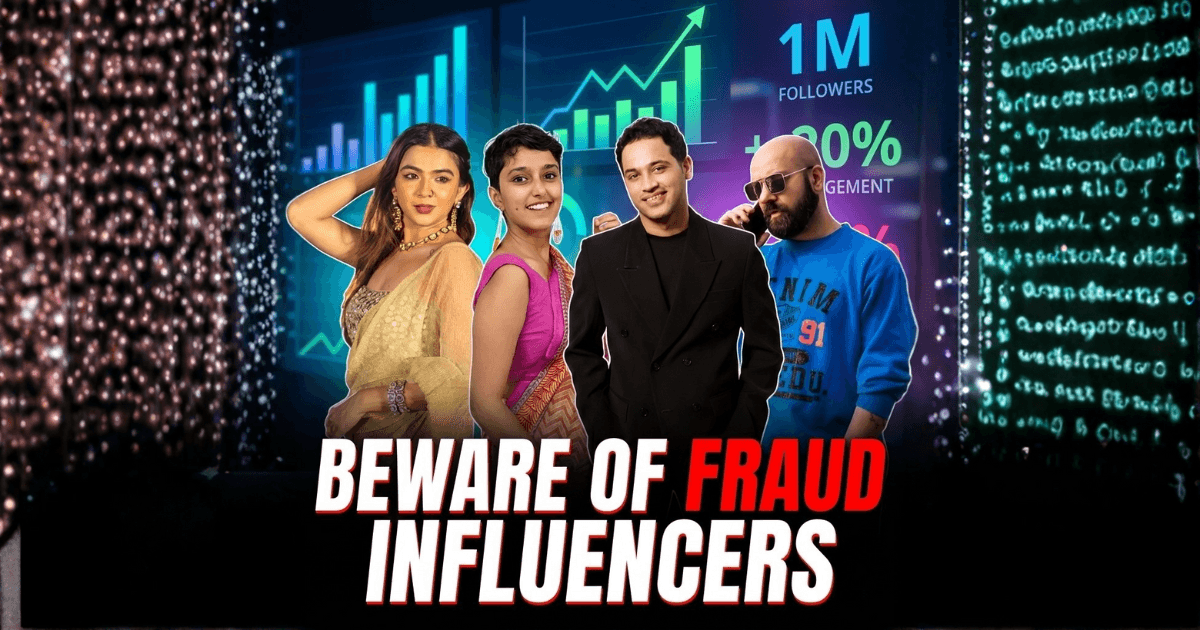Influencer marketing in India is booming. According to the Indian Brand Equity Foundation (IBEF), the Influencer Marketing Industry in India was valued at around ₹3,600 crore (US $ 421 million) in 2024 and is projected to grow by ≈25% in 2025. Another report by Kofluence estimates the creator economy in India now includes 3.5-4.5 million creators, growing at about a 22% CAGR.
That scale means brands, agencies, platforms and creators are all locked into an ecosystem where influence appears immensely valuable.
That's where we confront the problem; when you scratch below the surface, the wholesome influencer bubble looks much less benign. The version of kindness, sincerity, positivity we consume online often does not reflect what is happening behind the camera, behind the brand deal, behind the filters. And brands are increasingly exposing themselves to risk by buying the image, not verifying the integrity.
Let’s dissect the fact how this works.
On the surface, the positive lifestyle creator is perfect; they post cinematic clips of street interviews, gently ask strangers about their dreams, turn moments of everyday life into artistic stories. They look non-threatening, warm, human. For brands this is a dream, they want authenticity, they want relatability, so they go with someone who looks like those values. But the problem is the assumption, “if you look good, you must be good”.
That assumption is flawed.
There are creators whose feed tells one story and whose reality tells another. I know of one. He has 500k+ followers. Beautiful content. Poetic, street-level real people interactions. Brand deals. Invited on stage. Yet colleagues and former staff say the side of him behind closed doors is not what the camera shows: mocking lower-income people, treating service staff poorly, using cultural pride as a content prop while disparaging the culture privately. While I can’t publish all names here, the pattern is clear, feeds become curated personas, unchecked. And until the truth leaks, brand and audience both believe the facade.
Why does this happen? A few forces at play:
• Brands focus on followers, impressions, reach and visible engagement. They often don’t check character.
• With millions of creators, standing out gets harder. One way: build a persona that evokes trust, warmth, good human being.
• The viral, the emotional, the short and dramatic win. Depth, moral consistency, long-term behaviour get less attention.
• Auditing inner behaviour or hiring histories of creators is messy and outside the usual influencer checklist.
The Kofluence report says micro-influencers (10k-100k followers) are gaining traction for their niche engagement. But it also warns about trust and transparency being the new brand currency.
Brands are aware the risk is rising. On another front, the virtual influencer market (yes, synthetic influencers) in India is forecast to grow from US$ 167.1 million in 2024 to US$ 1,662.8 million by 2030 (CAGR ~47.3%), meaning even more layering of image and artifice.
That means the context for influence is only getting more complicated and less anchored in real persons.
What does this mean for brands and the broader ecosystem? Several important risks:
• When a creator with a nice feed turns out to have a troubling history; harassment, discrimination, hypocrisy, the brand’s reputation suffers. The damage is often stronger than the benefit of the deal.
• Audiences are starting to distrust influencer recommendations. If the influencer shows up everywhere, pushing everything, the authenticity bar drops.
• Authentic creators who behave consistently may get marginalised because the easy aesthetic creators get the deals and the appearances. That skews the ecosystem toward performance, not integrity.
• When influencers commodify culture, poverty, emotion, it risks reducing real social issues into content fodder. That flattens nuance and can harm communities.
So what should a brand or founder actually do? Not what they commonly do, but what they must do.
• Ask about the creator’s behaviour offline. Speak to former collaborators. Check what people say when they are not being filmed.
• Reach and followers are easy to game. Focus more on conversion, retention, repeat behaviour, authenticity of engagement.
• Make the contract include behaviour clauses. Make long-term partnerships, not one-off deals.
• Don’t just pick the prettiest feed. Use micro and nano creators who may have less polish but more trust.
• Set clear expectations on disclosure, ethics, authenticity. The audience is smarter now and will call you out.
From the creator side, the advice is simple, create from a place of integrity if you want long term. Because the tools will shift, audience tastes will move, and your loyalty will matter more than your follower count.
We need to stop accepting packaging as proof. Someone’s curated image is not a guarantee of character. The easier it looks, the more suspicious we should be. If you keep buying the image and ignoring the person, you are complicit in building an economy of simulacra; imitation, not substance.
The wholesome influencer bubble is already at risk of cracking. Brands, creators, users, we should want better, for in a culture where image wins over authenticity, everybody loses. And if you don’t pause and look, your brand, your community and your values will be collateral.
India’s Influencer Economy Has a Character Problem (And No One Wants to Talk About It)
0 min read

Published by

